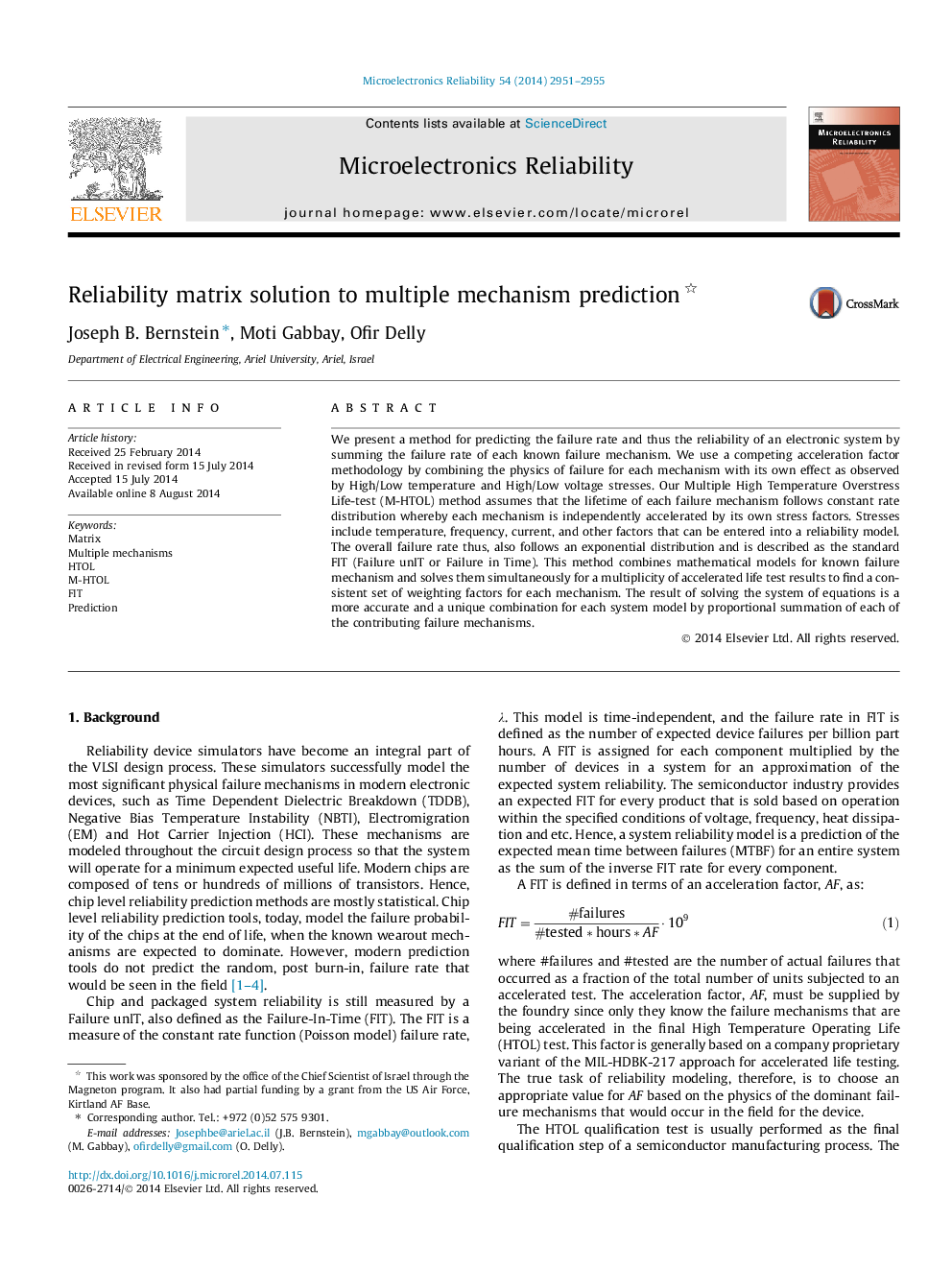| Article ID | Journal | Published Year | Pages | File Type |
|---|---|---|---|---|
| 10365709 | Microelectronics Reliability | 2014 | 5 Pages |
Abstract
We present a method for predicting the failure rate and thus the reliability of an electronic system by summing the failure rate of each known failure mechanism. We use a competing acceleration factor methodology by combining the physics of failure for each mechanism with its own effect as observed by High/Low temperature and High/Low voltage stresses. Our Multiple High Temperature Overstress Life-test (M-HTOL) method assumes that the lifetime of each failure mechanism follows constant rate distribution whereby each mechanism is independently accelerated by its own stress factors. Stresses include temperature, frequency, current, and other factors that can be entered into a reliability model. The overall failure rate thus, also follows an exponential distribution and is described as the standard FIT (Failure unIT or Failure in Time). This method combines mathematical models for known failure mechanism and solves them simultaneously for a multiplicity of accelerated life test results to find a consistent set of weighting factors for each mechanism. The result of solving the system of equations is a more accurate and a unique combination for each system model by proportional summation of each of the contributing failure mechanisms.
Related Topics
Physical Sciences and Engineering
Computer Science
Hardware and Architecture
Authors
Joseph B. Bernstein, Moti Gabbay, Ofir Delly,
